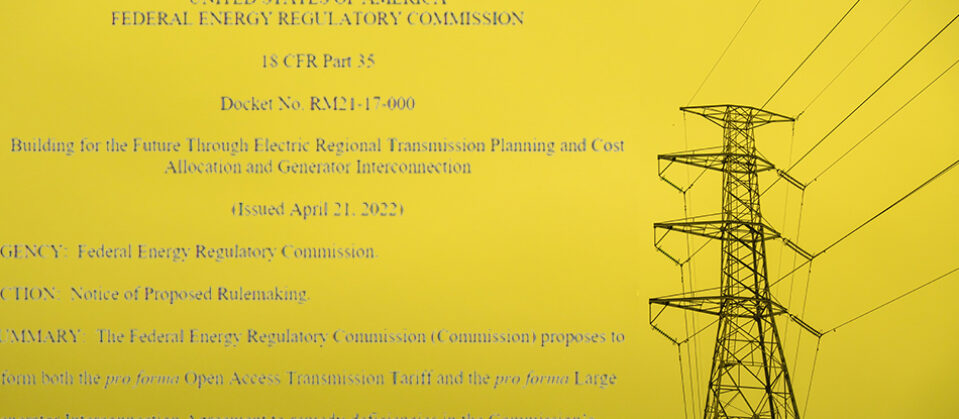Plugging in to Opportunities for a Resilient Grid
Jessica Bell (Energy Director & Deputy Director) / June 23, 2022

This week marks the beginning of summer and a likely continuation of the extreme heat and other dangerous weather that has been front and center for some time. These weather events can threaten and tax the power grid, taking down power lines and leaving customers without electricity when they are particularly vulnerable due to weather conditions. Recently, utilities in Ohio cut power to some customers to prevent more widespread grid damage after threats from thunderstorms and heat, raising serious questions about equity as lower-income city areas had their power cut rather than white suburban areas.
Reducing emissions from power generation is a key step in mitigating these harms of climate change. At the state level, there is significant news on that front. Rhode Island’s legislature recently passed new legislation to require 100% renewable energy in the state by 2033, a measure supported by labor and environmental advocates. And a New York court just upheld the state’s rejection of a permit for a gas-fired power plant under New York’s Climate Leadership and Community Protection Act.
But increasing system resilience and addressing inequities in how the grid is designed and built are also necessary. The Federal Energy Regulatory Commission (FERC), the agency responsible for interstate electricity sales with oversight over regional grid operators, has been taking a harder look at these issues. Last week, FERC issued two proposed rules on transmission and extreme weather. FERC has other proposals currently out for comment to reform the grid, including a proposal on transmission planning and who should pay for upgrades (known as cost allocation) and a proposal on how to connect new energy sources to the grid. As FERC Commissioner Allison Clements said recently, “the role of FERC is to facilitate what is going on in the world reliably and affordably.”
There are several events and resources that advocates can check out to get up to speed. The State Impact Center’s upcoming event about transmission reform, cosponsored with WE ACT for Environmental Justice, will focus on how changes to transmission policy can promote equity and decarbonization.
Beyond transmission, earlier this month, Massachusetts Attorney General Maura Healey hosted a webinar on capacity accreditation. This topic seems wonky, but it is important to get right. Capacity accreditation looks at the impact of a particular resource on the reliable operation of the grid, considering the features of each type of generation—renewables, storage, demand response, gas-fired, and otherwise. This allows grid operators to manage risks and investment to keep up with the modern energy mix. A recent report prepared by the Brattle Group for the Massachusetts AGO provides an overview of different regional approaches.
The Massachusetts AGO also hosted a teach-in to make electricity market concepts more accessible to the public. There will be more opportunities in states and federally, as FERC’s Office of Public Participation grows, for public engagement on grid affordability, reliability, and equity. Translating and demystifying FERC and electricity market issues is key to building a clean, reliable, affordable grid.
Want blog posts like these delivered straight to your inbox? Sign up for our newsletter, Legally Speaking.
This page was updated on February 27, 2024 to better meet our accessibility standards. To see the page as it was initially published, click here.
